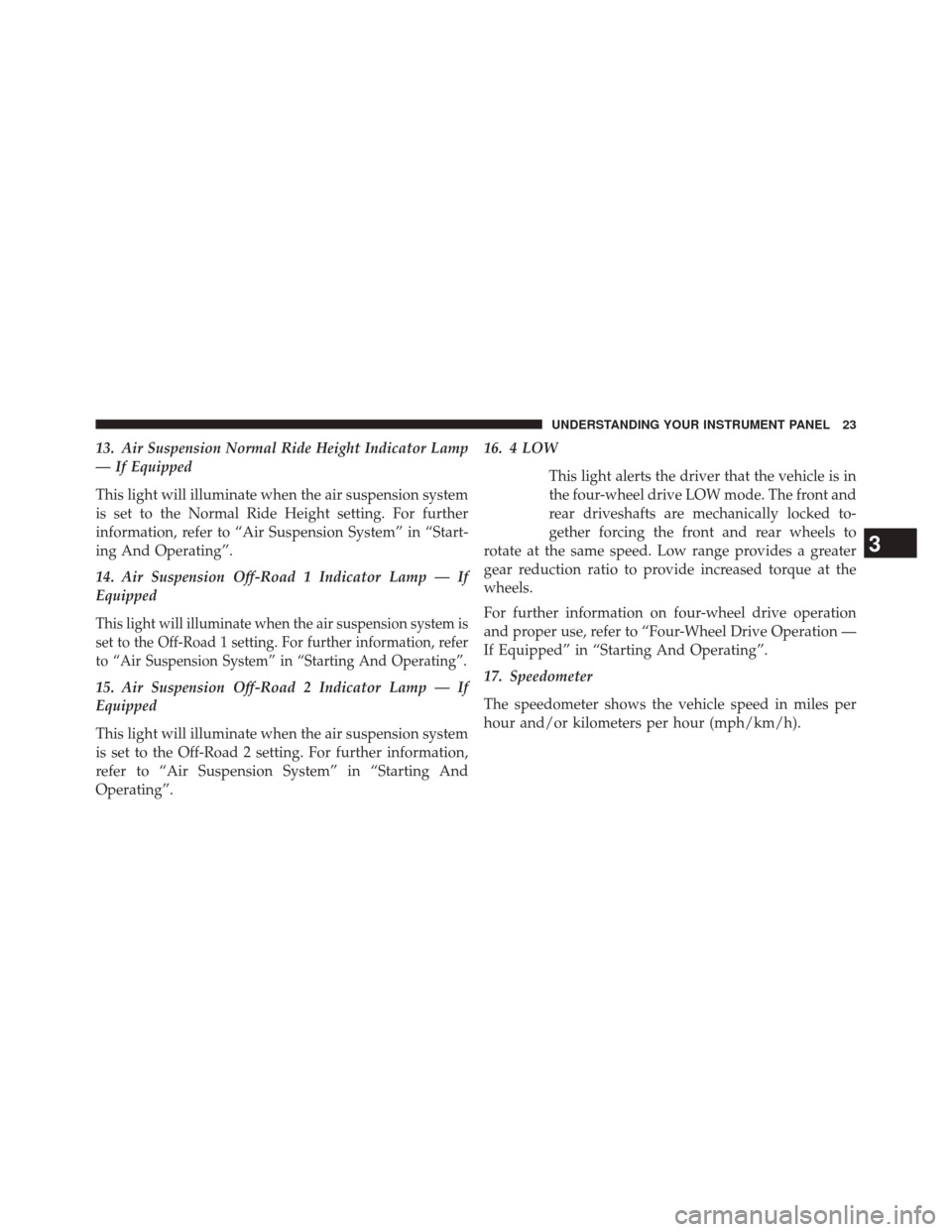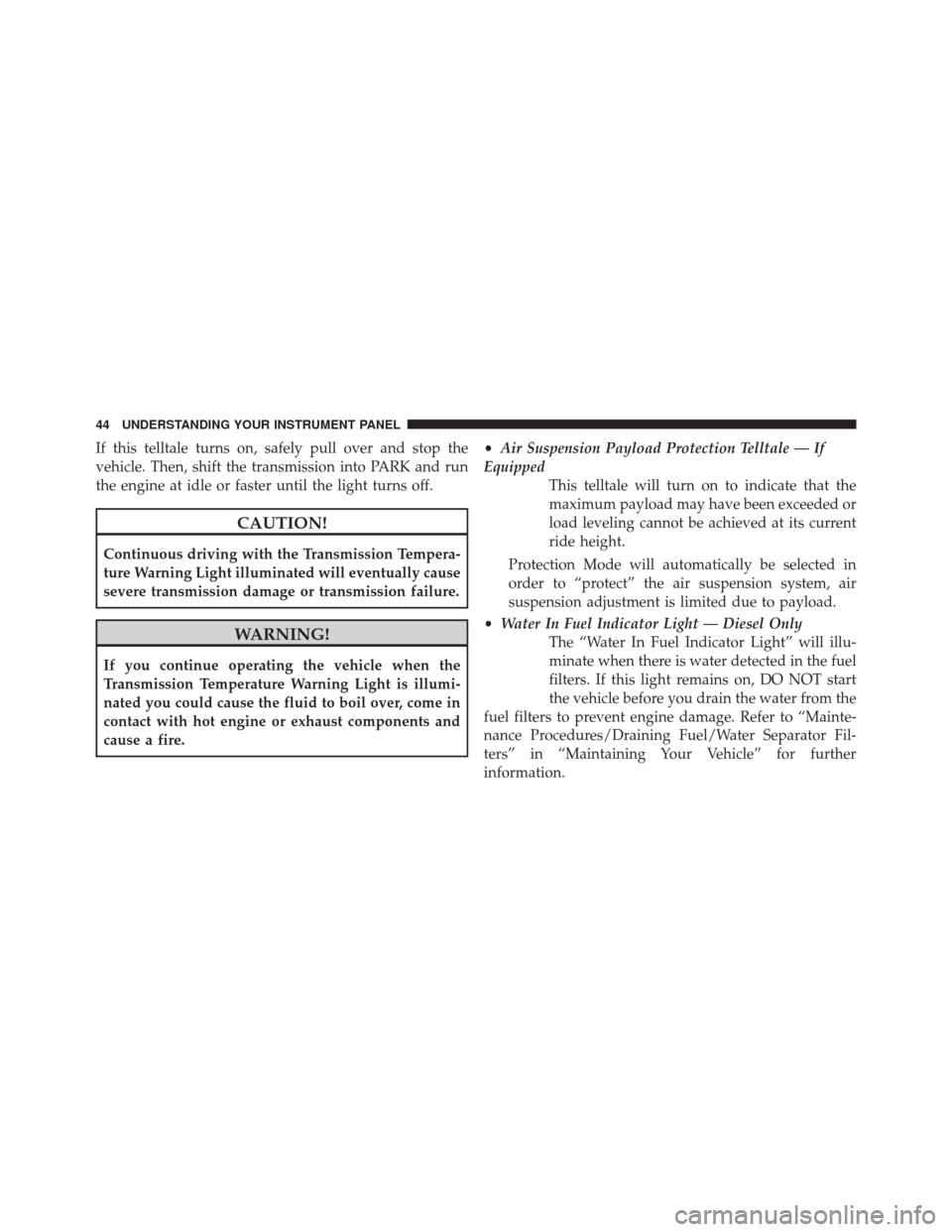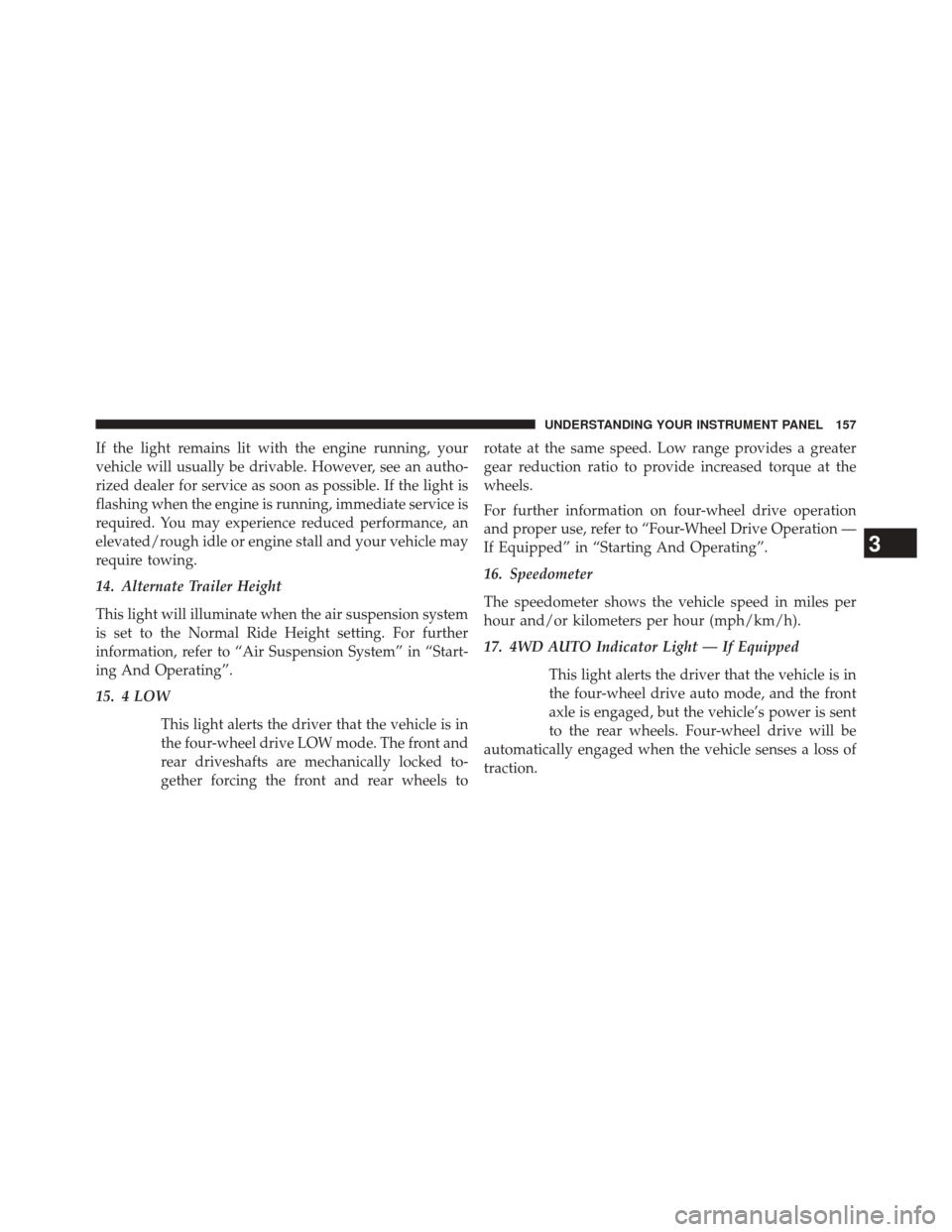Page 25 of 347

13. Air Suspension Normal Ride Height Indicator Lamp
— If Equipped
This light will illuminate when the air suspension system
is set to the Normal Ride Height setting. For further
information, refer to “Air Suspension System” in “Start-
ing And Operating”.
14. Air Suspension Off-Road 1 Indicator Lamp — If
Equipped
This light will illuminate when the air suspension system is
set to the Off-Road 1 setting. For further information, refer
to “Air Suspension System” in “Starting And Operating”.
15. Air Suspension Off-Road 2 Indicator Lamp — If
Equipped
This light will illuminate when the air suspension system
is set to the Off-Road 2 setting. For further information,
refer to “Air Suspension System” in “Starting And
Operating”.16. 4 LOW
This light alerts the driver that the vehicle is in
the four-wheel drive LOW mode. The front and
rear driveshafts are mechanically locked to-
gether forcing the front and rear wheels to
rotate at the same speed. Low range provides a greater
gear reduction ratio to provide increased torque at the
wheels.
For further information on four-wheel drive operation
and proper use, refer to “Four-Wheel Drive Operation —
If Equipped” in “Starting And Operating”.
17. Speedometer
The speedometer shows the vehicle speed in miles per
hour and/or kilometers per hour (mph/km/h).
3
UNDERSTANDING YOUR INSTRUMENT PANEL 23
Page 46 of 347

If this telltale turns on, safely pull over and stop the
vehicle. Then, shift the transmission into PARK and run
the engine at idle or faster until the light turns off.
CAUTION!
Continuous driving with the Transmission Tempera-
ture Warning Light illuminated will eventually cause
severe transmission damage or transmission failure.
WARNING!
If you continue operating the vehicle when the
Transmission Temperature Warning Light is illumi-
nated you could cause the fluid to boil over, come in
contact with hot engine or exhaust components and
cause a fire.•
Air Suspension Payload Protection Telltale — If
Equipped This telltale will turn on to indicate that the
maximum payload may have been exceeded or
load leveling cannot be achieved at its current
ride height.
Protection Mode will automatically be selected in
order to “protect” the air suspension system, air
suspension adjustment is limited due to payload.
• Water In Fuel Indicator Light — Diesel Only
The “Water In Fuel Indicator Light” will illu-
minate when there is water detected in the fuel
filters. If this light remains on, DO NOT start
the vehicle before you drain the water from the
fuel filters to prevent engine damage. Refer to “Mainte-
nance Procedures/Draining Fuel/Water Separator Fil-
ters” in “Maintaining Your Vehicle” for further
information.
44 UNDERSTANDING YOUR INSTRUMENT PANEL
Page 159 of 347

If the light remains lit with the engine running, your
vehicle will usually be drivable. However, see an autho-
rized dealer for service as soon as possible. If the light is
flashing when the engine is running, immediate service is
required. You may experience reduced performance, an
elevated/rough idle or engine stall and your vehicle may
require towing.
14. Alternate Trailer Height
This light will illuminate when the air suspension system
is set to the Normal Ride Height setting. For further
information, refer to “Air Suspension System” in “Start-
ing And Operating”.
15. 4 LOWThis light alerts the driver that the vehicle is in
the four-wheel drive LOW mode. The front and
rear driveshafts are mechanically locked to-
gether forcing the front and rear wheels to rotate at the same speed. Low range provides a greater
gear reduction ratio to provide increased torque at the
wheels.
For further information on four-wheel drive operation
and proper use, refer to “Four-Wheel Drive Operation —
If Equipped” in “Starting And Operating”.
16. Speedometer
The speedometer shows the vehicle speed in miles per
hour and/or kilometers per hour (mph/km/h).
17. 4WD AUTO Indicator Light — If Equipped
This light alerts the driver that the vehicle is in
the four-wheel drive auto mode, and the front
axle is engaged, but the vehicle’s power is sent
to the rear wheels. Four-wheel drive will be
automatically engaged when the vehicle senses a loss of
traction.
3
UNDERSTANDING YOUR INSTRUMENT PANEL 157